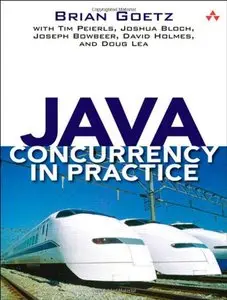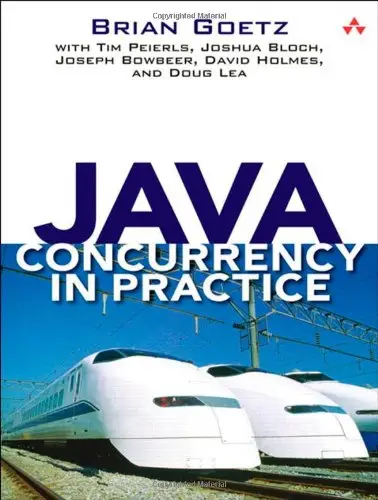Java Concurrency in Practice by Brian Goetz
English | May 19, 2006 | ISBN: 0321349601 | 384 Pages | EPUB | 7.1 MB
English | May 19, 2006 | ISBN: 0321349601 | 384 Pages | EPUB | 7.1 MB
"I was fortunate indeed to have worked with a fantastic team on the design and implementation of the concurrency features added to the Java platform in Java 5.0 and Java 6. Now this same team provides the best explanation yet of these new features, and of concurrency in general. Concurrency is no longer a subject for advanced users only. Every Java developer should read this book."
–Martin Buchholz
JDK Concurrency Czar, Sun Microsystems
"For the past 30 years, computer performance has been driven by Moore's Law; from now on, it will be driven by Amdahl's Law. Writing code that effectively exploits multiple processors can be very challenging. Java Concurrency in Practice provides you with the concepts and techniques needed to write safe and scalable Java programs for today's–and tomorrow's–systems."
–Doron Rajwan
Research Scientist, Intel Corp
"This is the book you need if you're writing–or designing, or debugging, or maintaining, or contemplating–multithreaded Java programs. If you've ever had to synchronize a method and you weren't sure why, you owe it to yourself and your users to read this book, cover to cover."
–Ted Neward
Author of Effective Enterprise Java
Threads are a fundamental part of the Java platform. As multicore processors become the norm, using concurrency effectively becomes essential for building high-performance applications. Java SE 5 and 6 are a huge step forward for the development of concurrent applications, with improvements to the Java Virtual Machine to support high-performance, highly scalable concurrent classes and a rich set of new concurrency building blocks. In Java Concurrency in Practice , the creators of these new facilities explain not only how they work and how to use them, but also the motivation and design patterns behind them.
However, developing, testing, and debugging multithreaded programs can still be very difficult; it is all too easy to create concurrent programs that appear to work, but fail when it matters most: in production, under heavy load. Java Concurrency in Practice arms readers with both the theoretical underpinnings and concrete techniques for building reliable, scalable, maintainable concurrent applications. Rather than simply offering an inventory of concurrency APIs and mechanisms, it provides design rules, patterns, and mental models that make it easier to build concurrent programs that are both correct and performant.
This book covers:
- Basic concepts of concurrency and thread safety
- Techniques for building and composing thread-safe classes
- Using the concurrency building blocks in java.util.concurrent
- Performance optimization dos and don'ts
- Testing concurrent programs
- Advanced topics such as atomic variables, nonblocking algorithms, and the Java Memory Model



